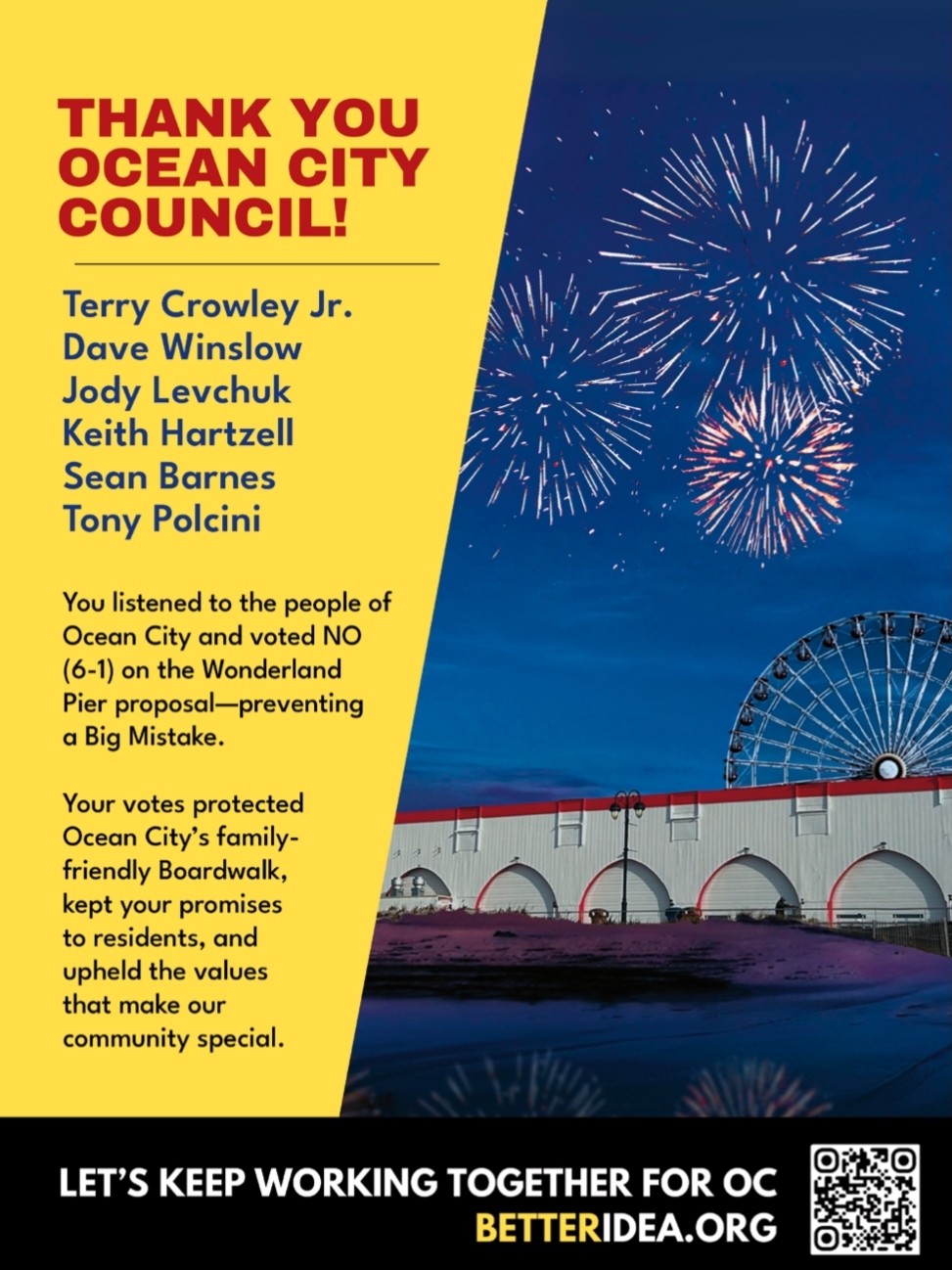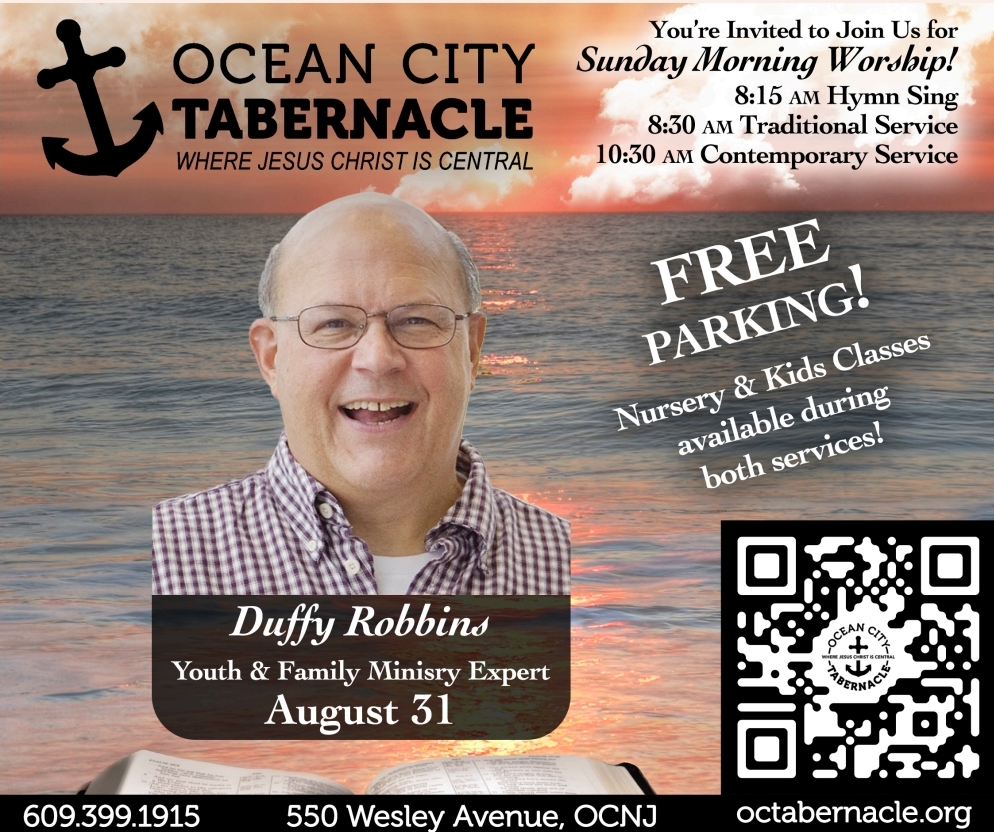Last Thursday, the City Council of Ocean City, New Jersey killed the plan by Eustace Mita to build a luxury Icona Hotel there. Mita wanted to build the hotel on the site of the closed Wonderland Pier at 6th Street and the Boardwalk. The Park had been losing money for years. Mita bought the site in 2021 from the Gillian family for $14 million. The property was in foreclosure and near sheriff’s sale. For three years, Mita leased the property to the Gillian family to run the amusement park. During this time, Mital paid real estate taxes, insurance and other costs to carry the property.
During this time, Mita paid architects, engineers and marketing experts to plan a better use for the property. They designed a $150 million, 252-room, 8-story Icona Hotel for the site. Mita also paid expensive lawyers, consultants and public relations experts to get public and political support. This was needed to get needed approvals and permits.
The proposed hotel would have been perfect for Ocean City. Eustace Mita is a first-class builder and operator. He has built and operated successful Icona hotels in Avalon and Wildwood Crest. The hotel would have brought needed real estate taxes to the city and upscale tourists to a struggling part of the Boardwalk. It would have been less of a burden to taxpayers than the previous amusement park. It would have required fewer police, parking spaces, and other city services.
Mita needed approvals from Ocean City’s government because the hotel is not permitted by Ocean City’s zoning laws. That is normal in New Jersey. Most zoning laws are written to make almost all proposed projects in violation of something. Most existing buildings are also “non-conforming”. They are too tall, too close to the sidewalk or neighboring properties, lack enough parking spaces or have signs that are too big. The particular use may not be permitted in that particular zone. If the building were to burn down, the owner would not be permitted to replace it.
There are obvious reasons for this. Zoning laws are prepared by planning “experts”. Very few have ever run a business. It is almost impossible for anybody to know the particular use and history of every property affected by a proposed zoning plan. Yet these “experts” propose detailed rules on exactly what can and cannot be built and one on every single parcel of land in town.
These “experts” hold “public hearings” before they make their final plans. However, few people attend. Most of those who do have narrow and selfish interests. Some own businesses and want to zone out competition. Some are people who enjoy good views, little traffic and easy parking when they are surrounded by vacant lots and rarely used properties. They want to keep things that way.
Even when planners make good zoning laws, those laws quickly become outdated. People are constantly moving and changing. People constantly want new products and services in new places. No planner could possibly know what businesses and buildings will be popular years later. The end result is that most zoning laws do not permit any new major project that is likely to succeed.
Developers who want to build such projects have three ways to build projects that do not comply. They can request that:
The City Council and Planning Board change the city’s zoning law.
The “Zoning Board of Adjustment” grant a “variance” The Board of Adjustment can grant a “variance” if it finds that “strict application” of zoning laws to a particular property would cause “peculiar and exceptional practical difficulties” or “hardship” to the developer. To grant a variance, the Board must find that there are “physical features uniquely affecting a specific piece of property” or “an extraordinary and exceptional situation uniquely affecting a specific piece of property”.
The City Council declare the property “blighted” and “in need of redevelopment”. That would let the City Council and the Planning Board make the property a special “Redevelopment Zone” and write a special zoning law just for that property. New Jersey enacted the law permitting this in 1948 to eliminate slums in big cities.
Eustace Mita and his lawyers chose the third “blighted” and “redevelopment” option. Last Thursday, the City Council of Ocean City rejected Mital’s request in a 6 to 1 vote.
The other options were just as bad. It is extremely expensive and complicated for one owner to persuade a town to change its entire zoning plan. Doing this also stirs up controversy in every neighborhood.
Getting a variance is just as difficult. It is hard to prove that a large lot by the Boardwalk is “exceptional” and “uniquely” suited for the hotel Mita wants to build. Even if the Zoning Board of Adjustment granted such a “variance” someone would have appealed that decisions, and a court would have probably reversed it after years of costly appeals.
After his request was denied, Mita announced that the project is dead. He said he is now arranging to sell the property to minimize his losses.
This is bad for everyone in Ocean City.
New Jersey’s motto is “Liberty and Prosperity”. It means that Liberty brings prosperity and that one cannot exist without the other. New Jersey zoning laws destroy liberty. They deny people the basic right to decide what is best for their own properties. Why do we have them? What purpose do they serve? Who benefits from them?
Zoning laws are a relatively new invention. They started in New York City in 1922. People complained that tall skyscrapers were blocking their sunshine. And so, New York passed a law to limit where tall buildings could be built and how tall they could be. Later, New York City later made laws controlling everything that could be built in every part of the city. Soon other cities and towns adopted similar laws all over the country. Atlantic City enacted its first zoning laws in 1929. Hardly anything was built during the Great Depression. Cities and towns began adopting zoning laws again in the 1950s. Today, almost all cities and towns have zoning laws. Houston, Texas is one of the few major cities that does not.
Zoning laws did little to change what was built. People with money and political power usually built whatever they wanted anywhere they wanted. They elected or bribed politicians. Their public relations consultants convinced the public that their projects were essential for the public good. They hired “community leaders” who opposed them when needed. The developers usually got their projects. However, they were usually a lot more expensive than what was built before zoning. And much better projects proposed by people without wealth or political connections were never even considered. Old, failing buildings stayed in business and decayed because it was too expensive to replace them. Bad politicians were elected and re-elected because they had the support of developers.
Before zoning laws were adopted, anyone could build whatever he or she wanted on his or her own property, as long as that use did not interfere with the equal rights of others to use and enjoy their properties. Property owners could not allow water, noise, vibrations or smells on their properties to “unreasonably interfere” with neighbors. Such uses were “common law nuisances” that were quickly stopped. Property owners who permitted them were punished and forced to pay damages.
People who did not want changes in their neighborhoods had an easy way to do that. They moved to planned developments where every property in the neighborhood had “restrictive covenants” in their deeds. Those deeds did not permit properties there to be used for commercial or industrial purposes. Some required that properties be used only for single family homes surrounded by spacious yards.
At one time, some planned developments had restrictive covenants which did not allow properties to be sold to blacks, Asians or Jews. However, those discriminatory restrictive covenants were made unenforceable by the U.S. Supreme Court in 1948. The case was called Shelley v. Kraemer. Other restrictive covenants are still enforced. Today, they are very common in condominiums and in “Planned Unit Developments” like the “Towne of Historic Smithville” in Galloway Township.
Atlantic City was the World’s Playground between 1880 and 1920. During that time there were no zoning laws. In 1903, the Chalfonte Hotel was built at North Carolina Avenue and the Boardwalk. It was the first brick and steel skyscraper hotel in Atlantic City. It was eight stories tall and had a thousand rooms. It was built in eight months. The owner got permits to build the hotel on the site of an old wooden hotel. The old hotel closed after Labor Day in 1903. It was demolished during the next two months. Construction began on the new hotel several days later. The eight-story brick and steel new Chalfonte Hotel opened on July 2, 1904, just in time for the holiday weekend. Between 1904, and 1930, dozens of modern brick and steel skyscraper hotels were built in Atlantic City in much the same way.
Now we have zoning laws. It now takes years just to get needed government approvals for most major projects.
Most zoning laws in New Jersey are completely detached from reality. They do not permit most new projects that most people want and need. They put most existing in violation of something. If a building burns down in a fire, it is usually not possible to rebuild it without going through a long and expensive variance process.
Most people are more comfortable with what they already have than with something new they are not familiar with. That is human nature. If people have the power to prevent change, they will tend to do it. In Ocean City, many people claimed that Mita’s proposed hotel on the site of a failed amusement would “destroy the character of Ocean City”. However, what would they say if there was a large failing hotel at 6th Street and the Boardwalk instead of an amusement park? What if Mita had proposed to demolish that hotel and replace it with an amusement park? Would those same people claim that replacing a hotel with an amusement park would “destroy the character of Ocean City”?
America was once great because business developers, entrepreneurs and innovators were free to build what they wanted on their own land with their own money. The only people they had to please were their investors, lenders, and customers. If their project succeeded, they would all benefit. The creators, investors and lenders would all make money. Customers and consumers would enjoy new products and services at low prices. If the project failed, the creators, investors and/or lenders would lose money. Their customers would get what they wanted somewhere else. The failed project would be torn down and a better one would be built. In Atlantic City, it was very common for failed businesses to be torn down after Labor Day and new buildings and businesses to be built, open and ready in time for the next summer.
We would all be better off if every town got rid of most zoning restrictions. However, at a minimum, towns like Ocean City would be far more vibrant, affordable and successful if they would allow almost any resort commercial use in almost any resort commercial district in the city. There is no logical reason to permit an amusement park with an 8-story high Ferris wheel, but not an 8-story hotel.
Seth Grossman is the Executive Director of the nonprofit group Liberty and Prosperity. Learn more about them at LibertyAndProsperity.com. Email info@libertyandprosperity.com and phone (609) 927-7333.















